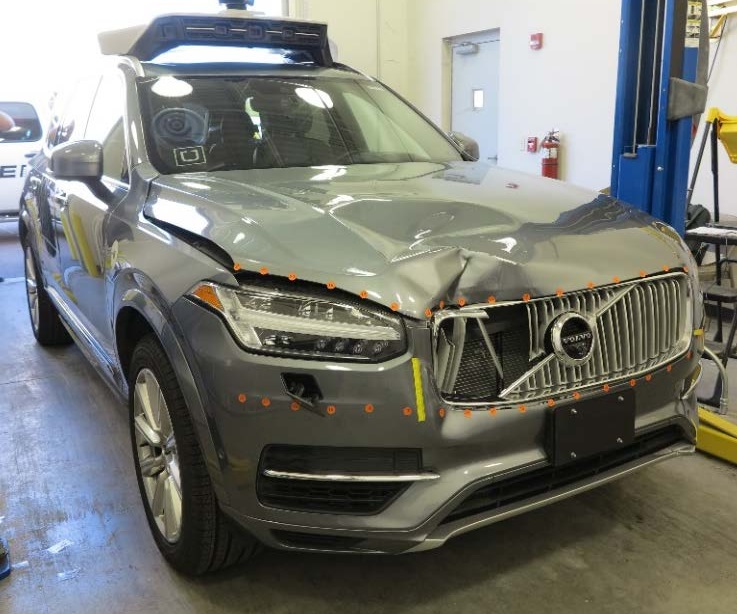
The initial report by the National Transportation Safety Board on the fatal self-driving Uber crash in March confirms that the car detected the pedestrian as early as 6 seconds before the crash, but did not slow or stop because its emergency braking systems were deliberately disabled.
Uber told the NTSB that “emergency braking maneuvers are not enabled while the vehicle is under computer control, to reduce the potential for erratic vehicle behavior,” in other words to ensure a smooth ride. “The vehicle operator is relied on to intervene and take action. The system is not designed to alert the operator.” It’s not clear why the emergency braking capability even exists if it is disabled while the car is in operation. The Volvo model’s built-in safety systems — collision avoidance and emergency braking, among other things — are also disabled while in autonomous mode.
It appears that in an emergency situation like this this “self-driving car” is no better, or substantially worse, than many normal cars already on the road.
It’s hard to understand the logic of this decision. An emergency is exactly the situation when the self-driving car, and not the driver, should be taking action. Its …read more
Source:: TechCrunch Gadgets

 Previous post
Previous post